 JPEG
JPEG
Replies to this thread:
More by JPEG
What people are reading
Subscribers
Please log in to subscribe to JPEG's postings.
:: Subscribe
|
[Please view other pages to see the rest of the postings. Total posts: 238]
|
[VIEWED 391283
TIMES]
|
SAVE! for ease of future access.
|
|
|
|
|
|
JPEG

Please log in to subscribe to JPEG's postings.
Posted on 04-18-09 9:46
AM
Reply
[Subscribe]
|
Login in to Rate this Post:
1  ?
?  Liked by
Liked by
|
| |
Last edited: 11-Jun-09 09:12 AM
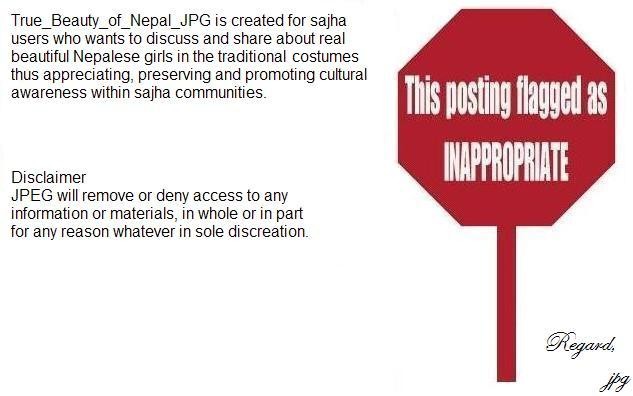
|
| |
|
|
|
|
tamanglakola

Please log in to subscribe to tamanglakola's postings.
Posted on 06-03-09 4:53
PM
Reply
[Subscribe]
|
Login in to Rate this Post:
0  ?
? 
|
| |
Nepe, those arts are amazing. Is the artist Kamal Yonjan?
|
| |
|
|
Nepe

Please log in to subscribe to Nepe's postings.
Posted on 06-03-09 5:29
PM
Reply
[Subscribe]
|
Login in to Rate this Post:
0  ?
? 
|
| |
|
|
| |
|
|
JPEG

Please log in to subscribe to JPEG's postings.
Posted on 06-05-09 9:05
AM
Reply
[Subscribe]
|
Login in to Rate this Post:
0  ?
? 
|
| |
Another true Nepali beauties. "A black rose among the red"
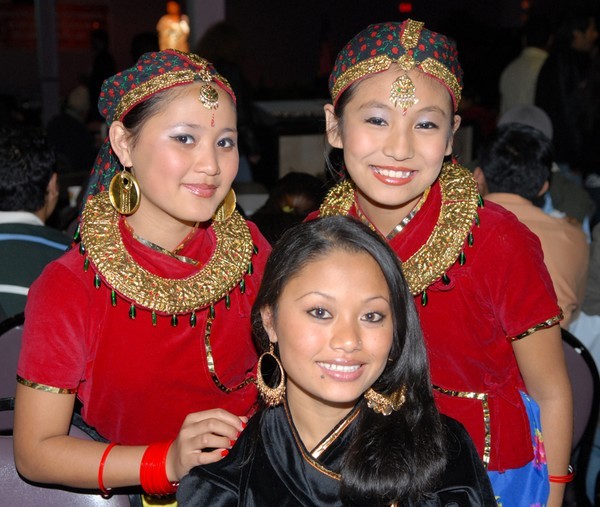
|
| |
|
|
JPEG

Please log in to subscribe to JPEG's postings.
Posted on 06-05-09 3:44
PM
Reply
[Subscribe]
|
Login in to Rate this Post:
0  ?
? 
|
| |
Nepali beauty performing Maha Puja or Worship of Self.
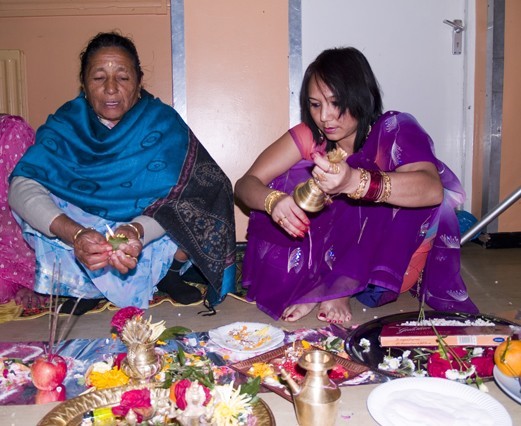
|
| |
|
|
JPEG

Please log in to subscribe to JPEG's postings.
Posted on 06-06-09 10:05
AM
Reply
[Subscribe]
|
Login in to Rate this Post:
0  ?
? 
|
| |
Magar nis beauty jpg from JPEG collection. Magars are settled mainly in Palpa, Gulmi, Myagdi, Rukum, Salyan and Rolpa (Ukyab and Adhikari, BS2057:45). They are also found in Arghakhanchi, Syangja, Parbat, Baglung, Dolpa, Surkhet, Sindhuli and Udaypur. Their ancesteral land is known as Magarat. Research scholars opine that the Sen kings and Thakuris of the Magrant districts are also Magars. These facts make the Magars as one of the most pervasive ethnic groups of Nepal. Their traditional land area was referred to as Athara Magarat or the eighteen regions of Magars and Bara Magarat or the twelve regions of Magars. The area belonged to what is today called Karnali and Gandaki regions. According to their mythology, the Magars evolved from two types of caves, namely Pelma Khar Pu or barely dispersing cave, and Yoma Khar Pu, or hornet's cave and scattered in all four directions (Budhamagar, BS2059). Points to be taken: The Kham Magar who live in the rugged highlands of Rukum, Salyan, Rolpa and Pyuthan districts in Rapti Zone are thought to have migrated from Siberia. This southward migration is evident in various shamanistic practices and other cultural features. They claim to occupy the original Magar homeland in Nepal from whence migration to the south and east proceeded. Interestingly, the origin of Mangar tribe as mentioned in Kirat chronology is a place in the north called Shin. From there, a group of people under the leadership of two leaders came to the south. The names of the leaders were Shing Mangar and Chitu Mangar. The people of the southern country called them Tangsang Thapa which means the people came from the far away north. Later on, these Mangar tribes multiplied and were divided into 12 groups. Under twelve leaders who called themselves Barah Mangars, the names of the twelve Mangars were Shinjali Thapa, Hongjali Thapa, Hungchun Thapa, Chhodey Thapa, Pudkey Thapa, Mundey Thapa, Udhro Thapa, Bairong Thapa, Ishar Thapa, Barahi Thapa, Hangyung Thapa and Hangshe Thapa. ~ Kirat Janakriti by S. K. Chatterjee, pg 40 (The History of the Kirat People, 2003) Magars have their own language which belongs to the Tibeto-Burman family and has three divisions called Kham, Kaike and Magarati. Magars have their own separate costumes and cultures. Even the rituals of Bara Magarat, Athara Magarat and Dolpa are slightly different (Budhamagar, BS2053). They have, like those of Gurungs, singing and dancing groups such as Ghatu, Kaura, Jhabre, Nachari, etc. Magars are basically followers of Buddhism. Even though majority of them are Hinduized, they worship hunting gods and goddesses within their families and outside, the gods of dead ancestors or their grandfathers and grandmothers. They have adopted their own practice of worship. They bury their dead and they have their own belief system regarding life after death (Hitchcock, 1966:25-34). From the perspective of their faith system, they appear as worshippers of nature or as animists. They believe in shamanism and their dhami (the faithhealer or a kind of shaman) is called Dangar and their jhankri (another kind of faithhealer or shaman) is called Rama. The traditional spiritual and social leader of Magars was called Bhusal who was very influential in the early days (Bista, 1996:66). Magars have an informal cultural institution, called Bheja. Bheja performs religious activities, organizes social and agriculture-related festivities, brings about reforms in traditions and customs, strengthens social and production system, manages resources, settles cases and disputes and systematizes activities for recreation and social solidarity (Dhakal, 1996). Christening ceremony is held on the fourth day in Bara Magarat, whereas the naito lagaune or navel-fixing ceremony is held on the twenty-second day in Rukum. In many places relatives are employed in lieu of priests for the job of conducting such ceremonies. There is a special cultural practice of offering phultika (literally ‘marking forehead with wet rice grains and offering flower') to the firstborn son. A ritual of anna prasan or starting of cerealfeeding is held in the sixth month if the baby is a boy and in the fifth month if it is a girl. The Magars of Pipaldanda and Humik in Palpa district, however, perform the cerealfeeding ceremony by touching the baby's mouth with cooked rice three times on the very day of christening ceremony (Baral and Magar, BS2050:62).
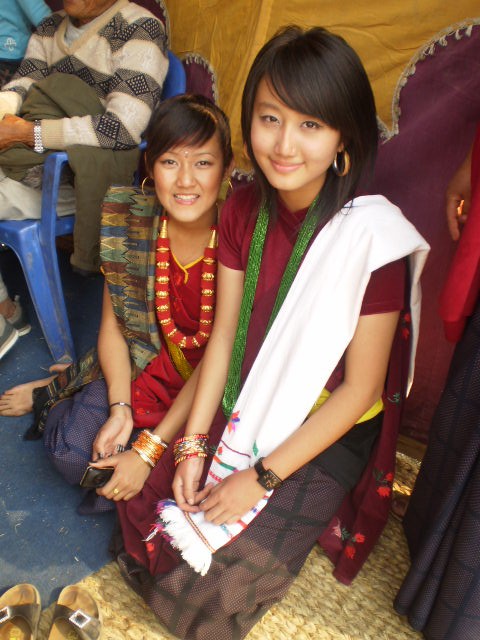
|
| |
|
|
JPEG

Please log in to subscribe to JPEG's postings.
Posted on 06-06-09 2:18
PM
Reply
[Subscribe]
|
Login in to Rate this Post:
0  ?
? 
|
| |
Nepali beauties unnoticed being click by jpg
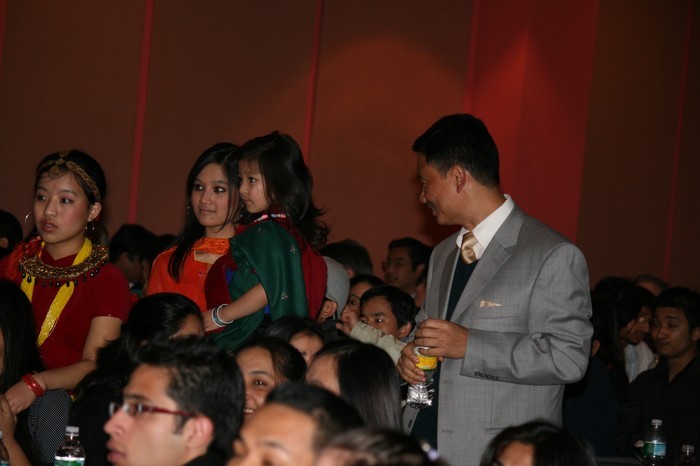
|
| |
|
|
JPEG

Please log in to subscribe to JPEG's postings.
Posted on 06-07-09 7:33
AM
Reply
[Subscribe]
|
Login in to Rate this Post:
0  ?
? 
|
| |
Not Forgetting Weekend Sajhaites. Beauties in Kurta and Sari!
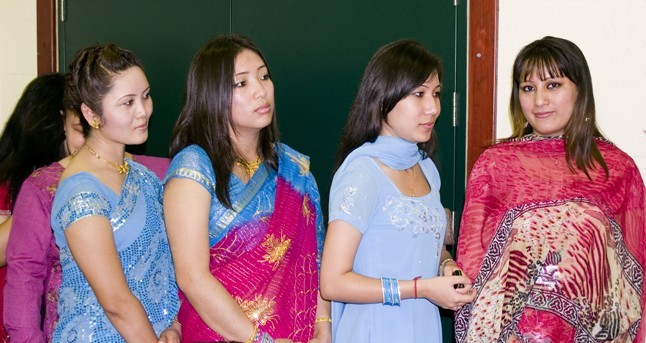
|
| |
|
|
JPEG

Please log in to subscribe to JPEG's postings.
Posted on 06-07-09 10:57
AM
Reply
[Subscribe]
|
Login in to Rate this Post:
0  ?
? 
|
| |
Baral ni beauty taken by jpg. Have a sunny day, Sunday folks.
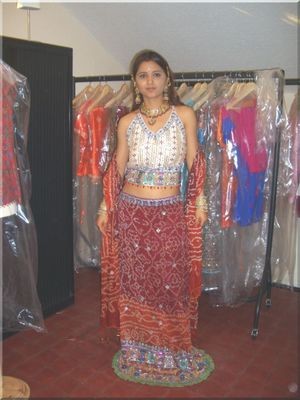
|
| |
|
|
JPEG

Please log in to subscribe to JPEG's postings.
Posted on 06-07-09 1:52
PM
Reply
[Subscribe]
|
Login in to Rate this Post:
0  ?
? 
|
| |
Limbu and Sherpa nis beauty from jpeg collection
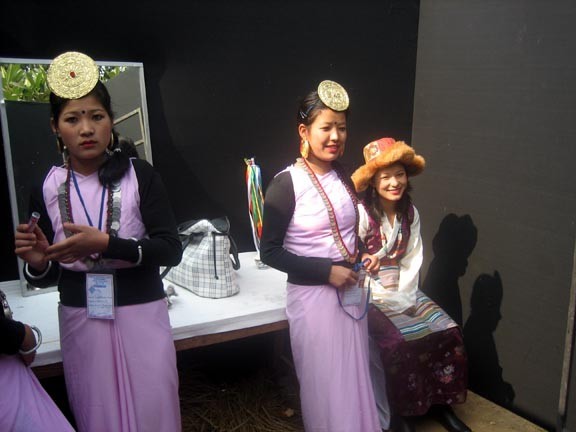
|
| |
|
|
JPEG

Please log in to subscribe to JPEG's postings.
Posted on 06-07-09 7:29
PM
Reply
[Subscribe]
|
Login in to Rate this Post:
0  ?
? 
|
| |
Tamang ni beauties.
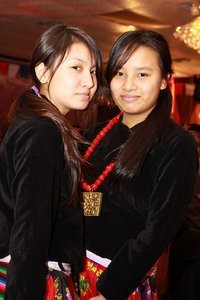
|
| |
|
|
JPEG

Please log in to subscribe to JPEG's postings.
Posted on 06-08-09 9:10
AM
Reply
[Subscribe]
|
Login in to Rate this Post:
0  ?
? 
|
| |
Gurung ni beauty jpg
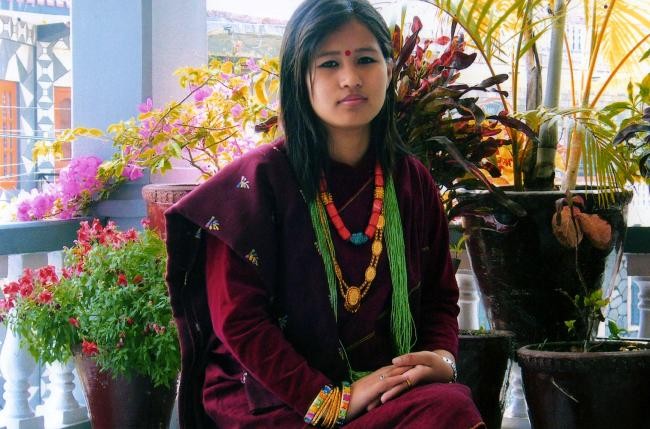
|
| |
|
|
JPEG

Please log in to subscribe to JPEG's postings.
Posted on 06-08-09 1:50
PM
Reply
[Subscribe]
|
Login in to Rate this Post:
0  ?
? 
|
| |
Rai ni beauties
Actually who is Kirat? The term 'Nepal' is first found in 'Atharva Parishista' (4th Century B.C.). The term 'Kirat Pradesh' can be found in earlier documents. According to this, it is understood that the term 'Kirat' not only stands for Rai, Limbu or Sunuwar but also stands for all the people living here at that time, including the Newars and Tharus. Points to be taken: It is striking that the present ethnic group of Nepal including Rai, Limbu, etc has virtually no earlier history in ancient literature. There are no instances of any of the group occurrence in the Vedic literature. The epics are similarly barren: neither the Ramayana nor the Mahabharata give evidence any group solely belonging to Kirat. Hence the Kirat denotes the Tibeto-Burmese people and the aborigines of Nepal as described below; The term Mongoloid viz Tibeto-Burmese is relatively new coined by scholars to classified people. The term Kirat on the other hand is a corrupt form of Kiriat, Kiryat or Kirjath which means a fort or town in Moabite language of the Mediterranean region. Sir John Hammerton in his book called “Early Races of Mankind", mentions that probably in the 4000 BC, there was a civilized race of mankind on the lower Euphrates of the Mediterranean region described as Mongolian or Summerian of the Cheldean. In the ancient hindu scriptures such as veda, the mongoloid looking people were called KIRATAS. Here's some quote from the book KIRATA-JANA-KRTI by Suniti Kumar Chatterji. The name Kirata is for the first time found in the Yajurveda (Sukla Yajurveda, Vajasaneya, XXX, 16; also Krsna Yajurveda, Taittiriya Brahmana, III, 4,12,1). In connexion with the Purusa-medha or ‘Man-Offering’ sacrifice, where a list of all kinds of human beings and animals symbolically or figuratively offered to the gods as sacrifice is given, we find the following passage:–
guhabhyah Kiratam; sanubhyo Jambhakam; paravatebhyah Kimpurusam which upon translation will read ‘A Kirata, for the caves; a Jambhaka (long-toothed man) for the slopes; a Kimpurusa (an ugly man, a wild man, an ape) for the mountains.’ Then in the Atharvaveda (X,4,14) we have a reference to a Kirata girl (Kairatika) who digs a herbal remedy on the ridges of the mountains:– Kairatika kumarika saka khanati bhesajam: hiranyayibhir abhribhir girinam upa sanusu.
upon translation ‘The young maid of Kirata race, a little damsel, digs the drug: Digs it with shovels wrought of gold on the high ridges of the hills.’ (Translation by R.T.Griffith.) ‘Kirata is a name applied to a people living in the caves of the mountains, as appears clearly from the dedication of the Kirata to the caves in Vajasaneyi Samhita (also Taittiriya Brahmana), and from the reference to a Kirata girl, who digs a remedy on the ridges of the mountains. Therefore the Vajasaneyi Samhita of the Shukla Yajurveda refers to the Kiratas as cave dwellers. KIRATAS are described in the ancient text as 'gold-like', i.e, yellow in color (and not dark or black like the Dasas and Dasyus and the Nisadas(residents of present-day Africa) Here's the quote from the the book taken from Kirata-parvan section of Varna-parvan of the Mahabharata. Kairatam vesam asthaya kancana-druma-sannibham "Taking up a Kirata resemblance, like unto a tree of gold" (IV,35,2); dadarsatha tato jisnuh purusam kancana-prabham "Then the Victorious One(Arjuna) saw a Man, shining like gold" (IV, 35,17); na tvam asmin vana ghore bibhesi kanaka-prabha "O thou that art shining like gold (addressing Siva in the form of Kirata), dost thou not fear in this terrible forest" (IV, 35, 18) The Ramayana also mentions the golden color of the Kiratas; thus Kiratasca tiksna-cudasca hemabhah priya-darsanah, antar-jala-cara ghora nara-vyaghra iti srutah upon translation is The Kiratas, with hair done in pointed top-knots, pleasant to look upon, shining like gold, able to move under water, terrible, veritable tiger-men, so are they famed. In Sanskrit, Kirata means one wandering over the forests with " kiram atati bhramati yah" hence denoting the Adivasi Janajatis (Indigenous Nationalities) of Nepal, thereby solving the issue of “Unity, not ethnic, divisionâ€. Now this is true_beauty_of_Nepal.
Last edited: 08-Jun-09 02:06 PM

|
| |
|
|
JPEG

Please log in to subscribe to JPEG's postings.
Posted on 06-09-09 9:32
AM
Reply
[Subscribe]
|
Login in to Rate this Post:
0  ?
? 
|
| |
JPG of Truly Nepali beauty in Kurta surwal.

|
| |
|
|
JPEG

Please log in to subscribe to JPEG's postings.
Posted on 06-09-09 3:26
PM
Reply
[Subscribe]
|
Login in to Rate this Post:
0  ?
? 
|
| |
5 Nepali beauties in saree
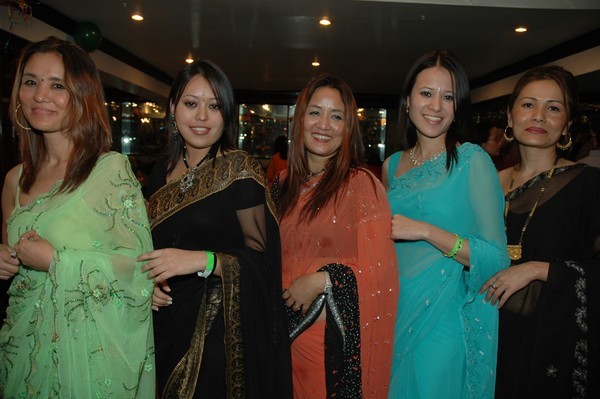
|
| |
|
|
JPEG

Please log in to subscribe to JPEG's postings.
Posted on 06-09-09 7:35
PM
Reply
[Subscribe]
|
Login in to Rate this Post:
0  ?
? 
|
| |
JPG click this beauty on 15/11/2007

|
| |
|
|
JPEG

Please log in to subscribe to JPEG's postings.
Posted on 06-10-09 9:11
AM
Reply
[Subscribe]
|
Login in to Rate this Post:
0  ?
? 
|
| |
Kanchi ko bihe garne bela bhako cha

|
| |
|
|
JPEG

Please log in to subscribe to JPEG's postings.
Posted on 06-10-09 9:36
AM
Reply
[Subscribe]
|
Login in to Rate this Post:
0  ?
? 
|
| |
Hayus Ni beauties The Hayus are a member of the Kirant tribe. Little is known about them till today but it is a fact that Hayus are endangered indigenous peoples of Nepal, numbering a few hundred families. According to Census 2001, their total number is 1,821. They live along the neighborhoods of the Maryang River, and they are also found in the districts of Sindhuli and Ramechhap. However, the village of Ratanchura in Sindhuli is considered their ancestral home. Short in stature, flat-nosed and squinty-eyed, they have their own unique language and culture. They are animists or nature worshippers, though they are highly influenced by neighboring Hindus.In socio-cultural pratices, Hayus are closer to Rais, but they do not perform Skewa Sili worship as Rais do. Some of the Hyus have begun to call themselves Rais. Hayus were nomadic until a few years ago; now they are mostly engaged in farming and wage labor. Most of them are landless and 80 percent of them live below poverty line. Almost 75 percent of them are illiterates. The area from the head of the Likhu River to Sunkoshi or the VDC areas of Okhreni, Sukajor and Ramechhap in Ramechhap District is the primitive settlement of Hayus. According to their mythology, Hayus are the youngest of the five Kiratis (ie Surel, Sunuwar, Rai, Limbu and Hayu). This youngest brother was left behind while roaming around in search of an appropriate settlement. The brother so left behind had carried a drum. The drum started to play on its own when he reached Mudajor of Ramechhap. He considered the sound as an auspicious signal and decided to settle down in that area (Gautam and Thapa Magar, 1994: 268-269). Hayus scattered from there to other areas of Ramechhap up to Ratanchura of Sindhuli. At present they are also found in small numbers in Dhanusa, Mahottari, Sarlahi, Siraha and Kabhre districts. According to a recently conducted survey, there is one Hayu in Ramechhap who has completed Bachelor's degree, two who have completed Proficiency Certificate Level and 16 who have passed the SLC examinations (Subba, BS2056). As regards the Hayus of Sindhuli, they have been identifying themselves as Rais. Hayus have their own language, which is called Hayu. This language belongs to the Tibeto- Burman family. The culture of Hayus is similar to that of Rais. In the christening ceremony of a newborn, a hen is required if the newborn is a girl and a cock if it is a boy. A bow and arrow is also required in the christening ceremony of a boy. The process is officiated by a sister, father's sister, brother-in-law, father's sister's husband, etc. Marriage is conducted either by arrangement or by mutual consent of the bride and the bridegroom. Whatever the form of marriage, local beer, spirit, meat, fish and some money are required. If someone dies, s/he is buried in a tomb dug in the personal land—rice field or dry field. The tomb is dug wide and deep in the form of a box and the corpse is lowered and placed in the cross-legged position. The dead body is covered carefully. Mourning period is over on the third day. A pig is slaughtered on this ritual. The daughter and the daughter's husband are invited to this ritual and all of the items offered in the name of the dead are given to them. Hayus are basically worshippers of nature and Kirata Dharma is their religion (Dopfum, BS2057). They worship several gods and goddesses of nature, ancestors and other family gods. Agriculture is the main occupation of Hayus. Although the area east of Rungkhola, west of Chyasku Khola, north of Sunkoshi and south of Muldada (Tumti Danda) was their Birta, a majority of them are landless today. None of them, except two or three families, can support themselves with their own earnings (Subba, ibid). In addition to agriculture, they are engaged in cowherdship and agricultural labour. Some of them subsist on fishing. They cut firewood in the jungle and sell them in the market place. Some of them are masons who build houses or make walls. The number of Hayus in civil service is insignificant.

|
| |
|
|
JPEG

Please log in to subscribe to JPEG's postings.
Posted on 06-10-09 12:25
PM
Reply
[Subscribe]
|
Login in to Rate this Post:
0  ?
? 
|
| |
Sherpa ni beauty in elegant dress. According to linguists, the word Sherpa means easterner, and this word comes from the Tibetan language. The Sherpa (Tibetan: shar "east" + pa "people" = "eastern people") are an ethnic group from the most mountainous region of Nepal, high in the Himalayas. Sherpas migrated from eastern Tibet to Nepal within the last 300-400 years. The ancestral place of the Sherpas is the northern side of the Solukhumbu district. The traditional habitat of the Sherpas also lies in the valley between the Dudh Koshi and Sun Koshi rivers. The Sherpa language and script are derived from Tibetan. Although the language of Sherpa is based on the Tibetan language belonging to the Tibeto-Burman language family, it is, as is Hindi from Nepali, slightly different from the Tibetan language. It resembles the Tibetan language only by 10 per cent. The script of Sherpas, is Sambhoti script, which is a Tibetan script (Sherpa, 1999). Sherpas are Buddhist. Lhosar is their major festival. They cremate their dead. They greet their guests with khada scarfs. Chhewa is performed for the dead. Tourism, trade and farming are the major occupations of the Sherpas.

|
| |
|
|
JPEG

Please log in to subscribe to JPEG's postings.
Posted on 06-10-09 3:24
PM
Reply
[Subscribe]
|
Login in to Rate this Post:
0  ?
? 
|
| |
Yakkha (Dewan) ni beauty Differences between Kirat and Tagaadharis Rites of Passage
Politics of culture: a study of three Kirata communities in the eastern Himalayas
By Tanka Bahadur Subba, 1999
3 Rites of Passage are Birth, Marriage and Death
Birth Rite:
The Kirata birth rites are basically three: the naming, the rice-feeding and the hair-cutting ceremonies of which the last is performed only for the male. The first ceremony takes place on the fourth day for a boy and a third day for a girl amonst the Limbus and Yakkhas and sixth and fifth days respectively for the Rais. The next important birth ceremony of the Kiratas is the rice feeding. This takes place during the fourth month for a boy and third month for a girl among the Limbus/Yakkhas and on the sixth and fifth month respectively for the Rais. The naming ceremony, called nwaran, takes place on the eleventh day in the case of Tagadharis. The naming ceremony among them depends on the exact time of birth and positions of the stars. The day on which this ceremony is to take place is therefore decided by the astrologer. The rice-feeding ceremony for the tagadharis which is called pasni normally takes place during the seventh month for a boy and fifth month for a girl. The final birth ceremony of the Kiratis is the hair-cutting ceremony which normally takes place when the chlid is three. The cutting of the hair
is preferably done by maternal uncle. This ceremony called, chuda-karma, takes place when the child is five or seven among the tagadharis. Marriage Rite: The most important feature of the Tagadhari marriage, which is distinctly different from the practices of the Kiratas, is that the main marriage ceremony takes place in the house of the bride whereas it takes place in the groom's house among the Kiratas. Finally about death rites. Death Rite: The Kirata communitities ususal practice of the disposal of dead is by burial, not by creamtion. Points to be taken:Regarding Yakshas or Yakkhas, Jack Finegan of Princeton University mentions in his book of the Archeology of World Religion that the Archaeological Museum of Mathura has a statue of Yaksha or Yakka. It is said that it is the oldest known Indian stone sculpture and is eight feet, eight inches high. The Sanskrit word, “Yaksha†or, “Yakkha†was perhaps originally a non-Aryan or at any rate a popular designation signifying practically the same as the Aryan Deva. The term "Dewan" is not a clan name of a Yakkha nationality. Dewan was a title given by the Shah Kings to Yakkha village chiefs. When Aryans first saw the kirat-ashur people in India, they found them as enlightened like themselves and called them Devas or gods or civilized people. In the region of veda, it is mentioned that the deities in the main is conceived as humans. The names for gods appear in Sanskrit as Deva, meaning enlightened one. Another designation used for deity in Rig veda is Ashur or Assura. But in Yajur veda, Athar veda and subsequent Vedic literature, the Ashur-kirat people fought against the Aryans and therefore, they were thought as evils. They classified them as vratya – kshatriyas. In the Mahabharta epic, the Yakkha who were who were bravely fighting against the Indo-Aryan invasion, for the protection of their lands and self existence were label as "Rakshyasha"(demon). It is claimed that the ethnonym "Yakkha" as per the conqueror Aryan's Sanskrit grammar had been spelled in the Aryan-Hindu mythologies as "Yaksa-sh" >> "Yasha" The Yakkha(Yasha) who were protecting(Rakshya) of their land were label Rakshya + Yasha = "Rakshyasha" is given from excerpt of Mahabharata section 3:152. The territory of Yakshas(Yakkha) is mentioned as the region surrounding the Kailasa mountains and Manasa lake (Tibet) in the Himalayas. In Section 3:152 describes Pandava Bhima's expedition to this territory:- "Bhima saw in the vicinity of the Kailasa cliff, that beautiful lotus lake surrounded by lovely woods, and guarded by the Rakshasas." referring to the Yakkha, Kiratas. Hence Yakkha has been guarding Nepal sovereignty since the early time. Now all of us are needed again to Rakshya our Bumi against the real Rakshyash who have entered our southern border. To Rakshya our Bumi is a True_Beauty_of_Nepal
Last edited: 10-Jun-09 03:29 PM
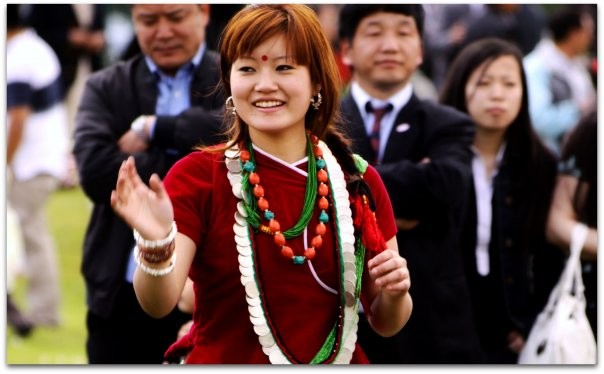
|
| |
|
|
JPEG

Please log in to subscribe to JPEG's postings.
Posted on 06-10-09 5:25
PM
Reply
[Subscribe]
|
Login in to Rate this Post:
0  ?
? 
|
| |
Appreciate the True_beauty_of_Nepal
Last edited: 10-Jun-09 05:25 PM
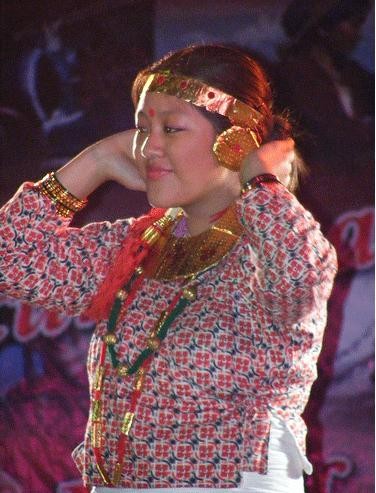
|
| |
Please Log in! to be able to reply! If you don't have a login, please register here.
YOU CAN ALSO

IN ORDER TO POST!
Within last 90 days
| Recommended Popular Threads |
Controvertial Threads |
| डीभी परेन भने खुसि हुनु होस् ! अमेरिकामाधेरै का श्रीमती अर्कैसँग पोइला गएका छन् ! |
| शीर्षक जे पनि हुन सक्छ। |
| What are your first memories of when Nepal Television Began? |
| Sajha Poll: नेपालका सबैभन्दा आकर्षक महिला को हुन्? |
| NRN card pros and cons? |
| Basnet or Basnyat ?? |
| निगुरो थाहा छ ?? |
| Nas and The Bokas: Coming to a Night Club near you |
| अमेरिकामा छोरा हराएको सूचना |
| TPS Re-registration case still pending .. |
| Breathe in. Breathe out. |
| nrn citizenship |
| My facebook archive (for sale) |
| ढ्याउ गर्दा दसैँको खसी गनाउच |
| Top 10 Anti-vaxxers Who Got Owned by COVID |
| Sajha has turned into MAGATs nest |
| Doctors dying suddenly or unexpectedly since the rollout of COVID-19 vaccines |
| अमेरिकामा बस्ने प्राय जस्तो नेपालीहरु सबै मध्यम बर्गीय अथवा माथि (higher than middle class) |
| Send Parcels from USA to Nepal & Worldwide. |
| Why is every youths leaving Nepal? Why are not youths entering politics and serving the country, starting business etc? |
|
| Nas and The Bokas: Coming to a Night Club near you |
|
NOTE: The opinions
here represent the opinions of the individual posters, and not of Sajha.com.
It is not possible for sajha.com to monitor all the postings, since sajha.com merely seeks to provide a cyber location for discussing ideas and concerns related to Nepal and the Nepalis. Please send an email to admin@sajha.com using a valid email address
if you want any posting to be considered for deletion. Your request will be
handled on a one to one basis. Sajha.com is a service please don't abuse it.
- Thanks.
|
